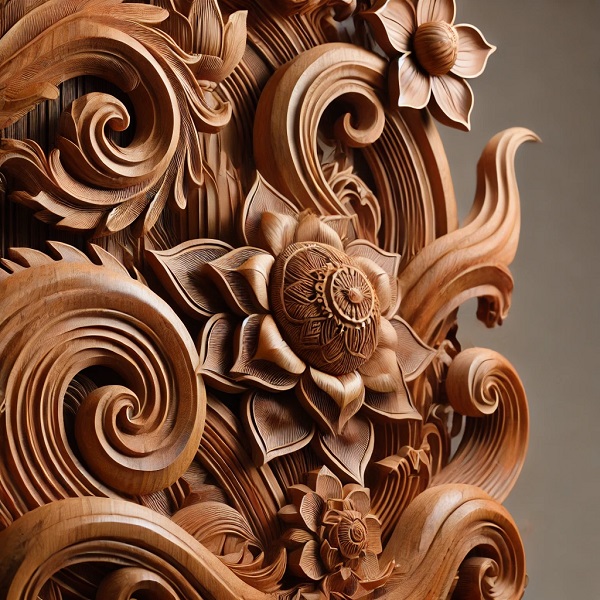The Timeless Beauty of Wood Art

Wood art is a captivating form of creative expression that has been cherished by cultures around the world for centuries. From intricate carvings to elegant sculptures, wood art showcases the natural beauty and versatility of this medium. In this article, we will explore the history, techniques, and significance of wood art, as well as its modern applications and enduring appeal.
A Brief History of Wood Art
Wood art has a rich history that dates back to ancient civilizations. Early humans used wood to create tools, weapons, and ceremonial objects. As societies evolved, so did the complexity and sophistication of wood art. In ancient Egypt, wood was used to craft elaborate furniture and sarcophagi adorned with intricate carvings. Similarly, in China and Japan, wood art flourished in the form of delicate sculptures, architectural elements, and religious artifacts.
During the Middle Ages in Europe, wood art reached new heights with the creation of magnificent altarpieces, statues, and decorative panels for churches and cathedrals. The Renaissance period saw a renewed interest in classical art forms, and wood carvers produced lifelike figures and detailed reliefs that continue to inspire artists today.
Techniques in Wood Art
Wood art encompasses a wide range of techniques, each requiring skill and precision. Some of the most common techniques include carving, turning, and marquetry.
Carving: Carving is one of the oldest and most traditional forms of wood art. It involves removing material from a solid piece of wood to create a desired shape or design. Carvers use various tools such as chisels, gouges, and knives to achieve intricate details and textures.
Turning: Turning involves shaping wood using a lathe. The wood is rotated while a cutting tool is applied to create symmetrical shapes, such as bowls, vases, and spindles. This technique is often used for functional objects as well as decorative pieces.
Marquetry: Marquetry is the art of creating pictures and patterns by inlaying pieces of wood veneer into a solid wood surface. This technique allows artists to create intricate designs with different colors and grain patterns, resulting in stunning visual effects.
The Significance of Wood Art
Wood art holds significant cultural and spiritual value in many societies. In some cultures, wood is considered a sacred material, and wooden objects are used in religious ceremonies and rituals. For example, in Africa, wooden masks and statues play a crucial role in traditional ceremonies and are believed to embody spiritual forces.
Wood art also serves as a means of storytelling and preserving cultural heritage. Indigenous communities around the world use wood to depict myths, legends, and historical events. These artistic creations not only showcase the craftsmanship of the artists but also convey important cultural narratives to future generations.
Modern Applications of Wood Art
In the modern era, wood art continues to evolve and adapt to new artistic trends and technological advancements. Contemporary wood artists experiment with different styles and techniques, pushing the boundaries of traditional wood art.
Sculpture and Installations: Modern wood artists create large-scale sculptures and installations that explore abstract forms and conceptual themes. These works often incorporate other materials, such as metal and glass, to create dynamic and visually striking pieces.
Furniture Design: Wood art has found a prominent place in contemporary furniture design. Designers use wood to create unique, functional pieces that combine aesthetics with practicality. The natural beauty of wood grain adds warmth and character to modern interiors.
Decorative Art: Wood remains a popular choice for decorative art. Artists create intricate wall panels, decorative boxes, and ornamental objects that add elegance and sophistication to homes and public spaces.
The Enduring Appeal of Wood Art
The timeless beauty and versatility of wood make it a cherished medium for artists and collectors alike. Each piece of wood art is unique, with its own distinct grain patterns and characteristics that add to its charm. The tactile nature of wood and the skill required to work with it give wood art a special place in the world of artistic expression.
Wood art also resonates with those who appreciate sustainable and eco-friendly practices. As a renewable resource, wood can be sourced responsibly, and many artists prioritize using reclaimed or sustainably harvested wood in their work. This commitment to environmental stewardship adds an extra layer of significance to wood art in the modern age.
Conclusion
Wood art is a testament to the enduring power of human creativity and craftsmanship. From ancient carvings to contemporary sculptures, wood art continues to captivate and inspire. Its rich history, diverse techniques, cultural significance, and modern applications make wood art a truly remarkable and timeless form of artistic expression.



